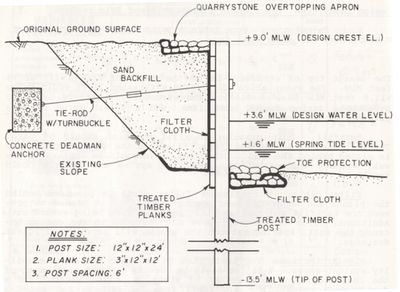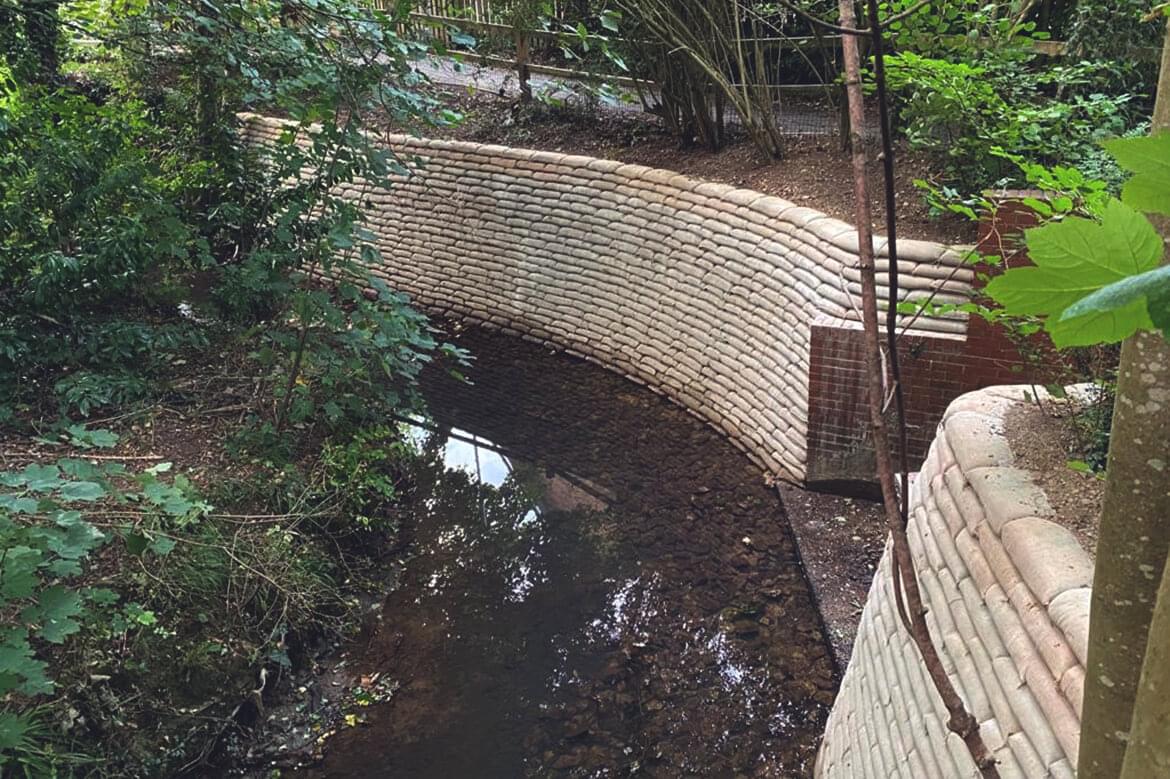Bulkhead on Lake Livingston: Pro Advice for Maximizing Longevity
Checking Out the Different Uses Bulkhead Frameworks in Modern Design
Bulkhead structures play a significant function in contemporary style, offering both functional and aesthetic objectives. They can define rooms, boost storage options, and improve lighting. In business setups, they work as prime focus that reflect brand identification - Bulkhead on Lake Livingston. In addition, their assimilation often sustains audio monitoring and sustainable methods. Understanding the full extent of their applications discloses much concerning contemporary design fads and customer experience. What innovative usages of bulkheads might arise in the future?
Defining Bulkhead Structures
Bulkhead structures play a vital duty in modern-day architecture, working as crucial components in different building designs. These frameworks are normally specified as elevated systems or ceilings, commonly used to conceal mechanical systems, wiring, or pipes. Bulkheads can be discovered in both household and business settings, where they supply a seamless mix of functionality and visual appeals. Their layout can incorporate lights components and other ornamental components, boosting the general aesthetic charm of an area.
Typically created from materials such as steel, wood, or drywall, bulkheads can be customized to fit the building style and needs of the building (Bulkhead on Lake Livingston). They offer not only to conceal unsightly framework yet also to produce specified zones within open areas. By handling the flow of a space, bulkheads contribute to the spatial organization, making them a considerable aspect of modern building technique. Their meaning encapsulates both aesthetic and functional measurements.
Functional Applications in Residential Design
Bulkhead frameworks play a necessary role in household style by facilitating area optimization methods that take full advantage of useful areas. Furthermore, they add aesthetic style components that improve the visual charm of living areas. In enhancement, these frameworks give crucial structural assistance services, making certain the honesty and safety and security of the home.
Room Optimization Approaches
As contemporary property designs increasingly prioritize effective use area, cutting-edge methods arise to maximize functionality without giving up aesthetic appeals. One popular technique entails the assimilation of bulkhead frameworks, which can define areas while giving important storage remedies. These frameworks can be employed to produce upright storage systems that enhance both company and ease of access. Additionally, multi-functional furniture, such as convertible sofas and foldable tables, matches bulkhead designs, permitting areas to adjust to varying demands. Open layout further maximize spatial circulation, urging versatility in use. Integrating built-in shelving and recessed lights within bulkheads likewise adds to a structured atmosphere, making certain that fully of area is made use of successfully and sympathetically within the overall design.
Visual Design Aspects

Architectural Assistance Solutions
In modern household style, a reliable structural assistance solution is crucial for maintaining the honesty of rooms while enhancing layout and performance. Bulkhead frameworks play a substantial duty in this scenario, functioning as both assistance and dividing aspects. They can conceal mechanical systems, such as pipes and electrical wiring, while supplying reinforcement to the ceiling and flooring systems. By purposefully positioning bulkheads, designers can develop defined areas within open flooring strategies, boosting use without endangering architectural security. Furthermore, these frameworks can suit lights components, adding to both looks and usefulness. To sum up, bulkhead frameworks are crucial in property style, using flexible assistance options that boost both the capability and visual appeal of living rooms.
Enhancing Visual Appeals in Commercial Areas
When industrial spaces accept cutting-edge bulkhead structures, they not only define physical borders however additionally substantially boost the overall aesthetic appeals of the setting. These architectural elements act as aesthetic focal factors, drawing focus and creating a sense of intrigue. By integrating diverse products such as timber, steel, or glass, bulkheads can show a brand name's identity and mission, contributing to a cohesive style.
The critical positioning of bulkheads can control light and darkness, adding deepness and measurement to otherwise level spaces. This interplay can change a business area right into an inviting atmosphere, motivating client engagement. In addition, using color and structure in bulkhead style can evoke specific emotions, improving the total customer experience. Inevitably, the thoughtful integration of bulkhead frameworks raises the visual appeal of commercial areas, making them not only practical but also visually captivating, thus fostering an enduring impression on visitors.
Acoustic Efficiency and Noise Monitoring
Effective acoustic performance plays a crucial role in modern architecture, particularly within industrial areas where audio monitoring is vital. Bulkhead frameworks can significantly boost acoustic high qualities by soaking up sound, reducing reverberation, and mitigating noise transfer between areas. These functions are particularly useful in atmospheres such as dining establishments, cinemas, and offices, where clear communication and an enjoyable auditory experience are vital.
The strategic positioning and design of bulkheads can assist create sound-buffer zones, successfully separating noisy locations from quieter ones. Products used in bulkhead building, such as soft coatings and acoustic panels, add to their sound-dampening capacities. In addition, the unification of bulkheads allows for the integration of sound-absorbing elements without endangering visual appeal. By addressing acoustic efficiency, designers can develop harmonious atmospheres that enhance comfort, improve individual experience, and advertise efficiency, making bulkheads a vital part in the layout of contemporary commercial spaces.
Integrating Bulkheads for Effective Space Use
Although often neglected, the assimilation of bulkheads in architectural design can significantly enhance room use in contemporary buildings. These structural elements serve numerous practical purposes, offering a method to conceal mechanical systems, electrical circuitry, and pipes without jeopardizing visual appeals. By tactically positioning bulkheads, architects can produce specified locations within open floor plans, therefore helping with better company and flow.
In addition, bulkheads can include storage remedies and lights attributes, taking full advantage of the capability of or else squandered upright space. In household setups, they may delineate areas such as kitchens or living locations, while official website in business rooms, they can improve the efficiency of formats by clearly noting paths and job areas.
Ultimately, the thoughtful assimilation of bulkheads contributes to an extra aesthetically enticing and orderly atmosphere, enabling versatile rooms that can progress with the requirements of their passengers. This technique not just maximizes space however also cultivates a more harmonious communication between kind and function.
Bulkheads in Public Design

Architectural Visual Enhancements
While lots of architectural components goal for functionality, bulkheads in public design offer a double objective by enhancing visual appeal. These frameworks commonly develop aesthetic rate of interest via their style, integrating seamlessly with bordering aspects. By utilizing various materials, textures, and shades, bulkheads can add to an unique identity for public areas, such as airport terminals, museums, and collections. Their critical positioning assists to delineate locations, guiding site visitors while adding deepness to the overall layout. Furthermore, bulkheads can highlight illumination, producing vibrant environments that change throughout the day. This visual enhancement not just boosts the site visitor experience but additionally fosters a sense of location, making bulkheads an important consideration in modern-day public design. In general, bulkheads embody the fusion of type and feature.

Structural Support Solutions
As engineers seek innovative means to boost the architectural honesty of public areas, bulkheads become vital components in the design and construction process. These structures provide essential assistance, especially in areas subject to heavy foot traffic or vibrant lots. By dispersing weight equally, bulkheads help avoid architectural failing while permitting for versatile design alternatives. In huge locations, such as arenas and convention centers, bulkheads are usually incorporated right into the overall building structure, guaranteeing security and security. In addition, they can promote the incorporation of utilities and mechanical systems, adding to the efficiency of room use. Inevitably, bulkheads represent a crucial option in contemporary public style, strengthening both functionality and security in community-focused atmospheres.
Environmental Defense Actions
Integrating environmental management measures right into public architecture has become significantly essential as city designers focus on sustainability together with architectural support. Bulkhead frameworks serve a double function in this respect, functioning as barriers versus disintegration and flooding while all at once boosting the visual appeal of metropolitan landscapes. Their design often includes natural environments such as vegetation, which can improve air top quality and give habitats for wildlife. Furthermore, bulkheads can be engineered with permeable materials that permit water absorption, decreasing runoff and promoting groundwater recharge. This combination of eco-friendly factors to consider not just maintains the environment yet likewise promotes area durability against climate modification. By utilizing bulkheads successfully, engineers add to lasting urban development that aligns with contemporary environmental goals.
Future Fads in Bulkhead Style
Emerging trends in bulkhead design mirror an expanding emphasis on sustainability, advancement, and capability in contemporary architecture. Designers are increasingly incorporating environmentally friendly products, such as recycled composites and bioplastics, to minimize ecological effect. On top of that, the integration of clever modern technology is ending up being widespread, allowing try here bulkheads to offer multi-functional functions, including power storage and climate control.
In metropolitan settings, modular bulkhead systems are obtaining grip, providing flexibility in design and ease of installment. These systems can be adapted to various landscapes, allowing for reliable room use. In addition, aesthetic factors to consider are evolving; bulkheads are currently being developed to enhance visual charm, often incorporating imaginative aspects that reverberate with regional society.
As climate resilience comes to be a priority, future bulkhead layouts will likely prioritize flooding defense and stormwater management, guaranteeing architectural integrity while attending to ecological challenges. This change symbolizes an all natural method to style that satisfies both eco-friendly responsibilities and human demands.
Regularly Asked Questions
What Materials Are Frequently Utilized for Bulkhead Building?
Usual products for bulkhead building and construction consist of concrete, steel, lumber, and composite materials. These choices supply sturdiness, structural integrity, and resistance to environmental factors, making them suitable for different applications in construction and engineering projects.
Exactly How Do Bulkheads Influence Structure Energy Performance?
Bulkheads improve developing power performance by giving thermal insulation and reducing air leak (Bulkhead on Lake Livingston). They aid maintain interior temperature levels, consequently lowering heating and cooling down needs, inevitably causing reduced power prices and boosted ecological sustainability
Are There Any Building Regulations Certain to Bulkhead Structures?
Yes, developing codes certain to bulkhead structures exist, differing by place. These laws generally attend to security, architectural honesty, and ease of access, making sure that bulkheads satisfy needed standards for construction and layout within a given jurisdiction.
Can Bulkheads Be Easily Changed or Removed Later?
Bulkheads can typically be customized or gotten rid of, depending on their layout and building and construction. Nonetheless, such changes might require careful planning and adherence to building codes to assure architectural integrity and safety and security are kept throughout the process.
What Are the Expenses Related To Mounting Bulkhead Structures?
The expenses related to installing bulkhead structures can vary considerably, commonly affected by materials, layout intricacy, and labor. Normally, costs range from moderate to high, depending on the job's particular requirements and area.
Bulkhead structures play a vital function in contemporary architecture, offering as important parts in numerous structure layouts. Bulkhead structures play an essential function in residential style by facilitating space optimization strategies that take full advantage of usable areas. Commonly neglected, the assimilation of bulkheads in architectural design can substantially improve area application in modern-day buildings. As engineers seek innovative methods to enhance the architectural integrity of public spaces, bulkheads emerge as important components in the style and building process. The expenses from this source associated with mounting bulkhead frameworks can vary considerably, generally influenced by materials, layout intricacy, and labor.